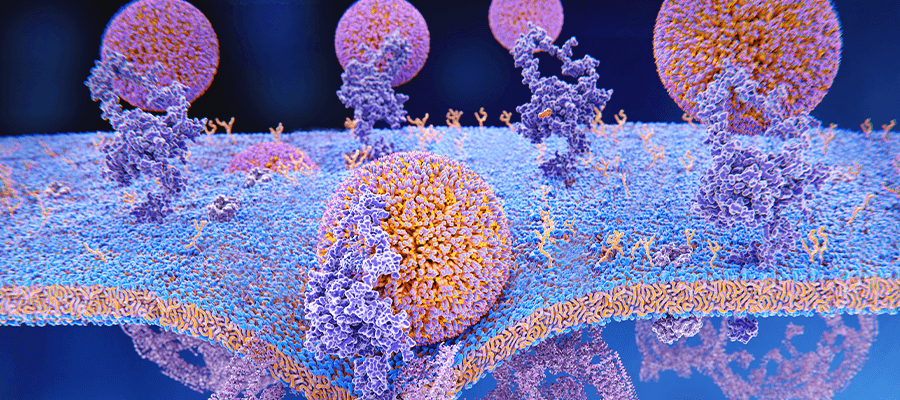Whilst the role of lipids has been particularly relevant within cardiovascular disease, their abundance in the body and high prevalence in several pivotal organs makes them novel biomarkers for many brain disorders. Lipids comprise up to 60% of the dry weight of the brain and have distinct structural attributes that allows them to contribute to many physiological functions, such as energy storage, transportation, and the formation of cell membranes. In the brain, lipids are responsible for impulse conduction, insulation, neurogenesis, and synaptogenesis. Importantly, lipids are vital in the formation of the myelin sheath, which encases all neurons, permitting signal transmittance.
A recent study examined how lipids can serve as biomarkers for several types of brain conditions. Lipoproteins (VLDL, IDL, LDL and HDL) are particularly attractive within the research setting, as cholesterol levels are highly modifiable through external interventions, including drug, diet and exercise-based therapies. Circulating levels of lipoproteins and their individual components significantly correlate with disease risk and have been studied extensively due to the availability of quantifiable diagnostic assays.
Apolipoproteins are important for lipoprotein function and are specific to different lipoproteins, which can serve as accurate and reliable surrogate indicators of lipoprotein levels. An example of this is the key role of apolipoprotein E4 (ApoE4) within the disease progression of neurological diseases. ApoE4 is associated with VLDL, IDL and chylomicrons and serves as a ligand for binding to cell surface receptors, thereby facilitating lipid clearance. ApoE4 binds to amyloid beta which reduces clearance, thereby triggering and exacerbating neurodegeneration in Alzheimer’s disease. Therefore, it would be crucial to better understand the impact of increased levels of ApoE4 expression on disease pathology in Alzheimer’s patients by developing potential therapies that target ApoE4 inhibition.
In addition to ApoE4, changes in HDL cholesterol, phosphatidylcholine and oleic acid are all associated with the progression of Alzheimer’s disease. Increasing levels of membrane-cholesterol also triggers the increase in phospholipase A2 activity, which in turn contributes further to the high levels of amyloid beta plaque formation.
Parkinson’s disease is characterised by a loss of dopaminergic neurons in substantia nigra combined with aggregation of α-synuclein and Lewy bodies. High lipid concentrations stimulate nucleation and aggregation of α-synuclein. Therefore, alterations in lipid metabolism and reduced clearance have been shown to be contributory factors to disease progression.
The enzyme, SIRT1 (NAD-dependent deacetylase sirtuin-1) promotes neuroprotection against Huntington’s disease, as SIRT1 activation is associated with increased HDL cholesterol and HDL-mediated reverse cholesterol transport. Conversely, increases in LDL cholesterol and triglycerides may be early markers of multiple sclerosis disease progression. The upregulation of sphingosine-1-phosphate receptors 1 and 3 and the increase in phospholipase A2 activation are also biomarkers of multiple sclerosis pathophysiology.
At Synexa Life Sciences, our Soluble Biomarkers and Cell Culture teams specialise in the development and full validation of custom assays to measure a multitude of biomarkers. Lipoproteins and their apolipoprotein components, as well as enzymes such as phospholipase A2 can serve as novel biomarkers and potential therapeutic targets in many neurological diseases such as Parkinson’s and Alzheimer’s disease. Using the state-of-art technology platforms in our purpose-built laboratories in three global sites, we develop and validate biomarker assays that are appropriate for the progressive field of lipids in neurological disorders.



